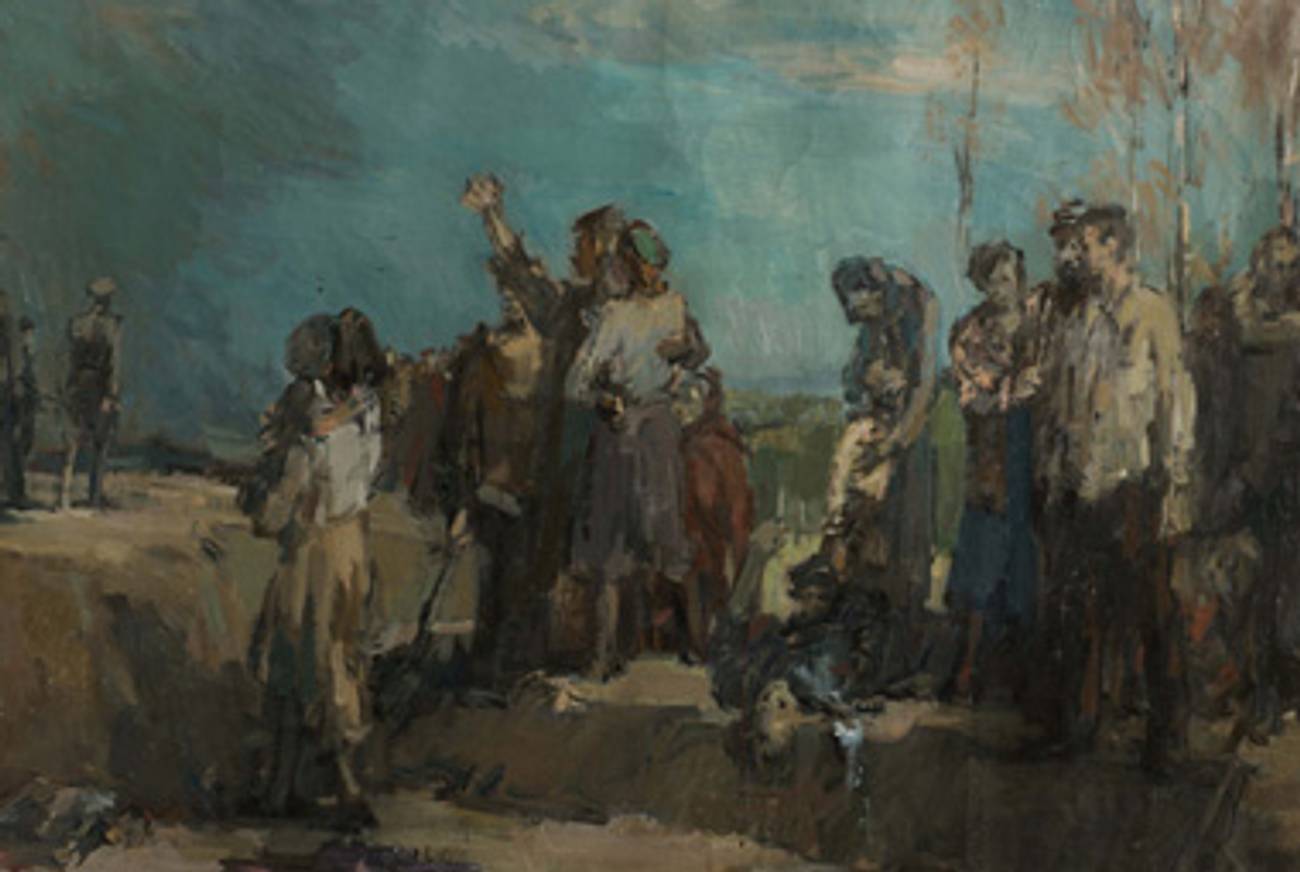Unearthed
In advance of the 70th anniversary of the Babi Yar massacre, an exhibition features the paintings of Felix Lembersky, who defied the Soviet regime and depicted the event as a Jewish tragedy




Though the painter Felix Lembersky was living in Leningrad in the fall of 1941, 1,000 kilometers from the site of the Babi Yar massacre, the event nonetheless seared itself into his memory and served as a touchstone for him in the decades that followed—at times to his peril. Made between 1944 and 1952, his series Execution: Babi Yar was among the earliest artistic renderings of the massacre. The paintings represented two acts of resistance: They defied the Soviet regime’s refusal to acknowledge the Holocaust as a Jewish tragedy and Stalin’s campaign against Jewish culture. In 1980, 10 years after the artist’s death, his widow immigrated to the United States and brought his works with her. Now, to commemorate the Babi Yar massacre’s 70th anniversary, Brandeis University will display two of Lembersky’s Babi Yar paintings—one never exhibited before.
Born in Lublin in 1913, Lembersky and his parents—a mathematician and musician—became refugees during World War I and ultimately settled in Berdichev. He began drawing at an early age and was encouraged by his parents to pursue the arts. His formal training began at the Jewish Art and Industrial School in Kiev. At 20, he enrolled in the Kiev Art Institute, where his work caught the eye of socialist realist pioneer Isaak Brodskii, who invited him to study at his Russian Academy of Arts in Leningrad. The Nazis invaded the Soviet Union as Lembersky was completing his studies. He enlisted in the defense brigade and was wounded near Leningrad. In December 1941, he defended his thesis and earned his degree while the city was under siege.
Lembersky was comfortable working in a socialist realist mode—he made a triptych of the Soviet leaders Lenin, Kirov, and Zhdanov in 1955—but he also dared to move outside officially sanctioned boundaries in both subject matter and artistic form. His three-painting Babi Yar series represents one poignant example. The first two canvasses, created in dark, somber colors (a common feature of art made at a time when paint was in short supply), had an almost documentary quality: the notorious ravine, Nazi soldiers with dogs, a gas truck, dark plumes of smoke, shovels, Jews carrying suitcases, huddled figures offering each other comfort, a woman reciting a prayer, and fallen victims.
The paintings’ pale, discolored Nazis dissolve into a dusty cloud in the background. The artist’s focus, instead, is on the stoicism and anguish of the Jewish victims, identified by their covered heads. The only figure with a bare head is a collaborator with a shovel in his hand. In the final painting, completed at the height of Stalin’s campaign against Jewish culture, a young boy lies murdered in the left-hand corner, wearing a yarmulke that is also his bleeding head wound.
Themes that informed Lembersky’s Babi Yar canvasses recur even in work devoted to seemingly unrelated subject matter. In paintings of miners working in the Urals, shovels, excavated gorges, and even the smoke billowing out industrial factories quietly evoke the horrors of war.
The exhibition Faces of Babi Yar in Felix Lembersky’s Art: Absence and Presence, sponsored by the Brandeis-Genesis Institute for Soviet Jewry, opens today at the Rose Art Museum in Waltham, Mass.
ChaeRan Freeze is a professor in the department of Near Eastern and Judaic Studies at Brandeis University.
ChaeRan Freeze is a professor in the department of Near Eastern and Judaic Studies at Brandeis University.